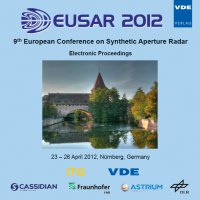Focusing Bistatic SAR Data in Double Sliding Spotlight Mode with TerraSAR-X and PAMIR Based on Azimuth Chirp Filtering
Konferenz: EUSAR 2012 - 9th European Conference on Synthetic Aperture Radar
23.04.2012 - 26.04.2012 in Nuremberg, Germany
Tagungsband: EUSAR 2012
Seiten: 4Sprache: EnglischTyp: PDF
Persönliche VDE-Mitglieder erhalten auf diesen Artikel 10% Rabatt
Autoren:
Wang, Robert; Deng, YunKai (Department of Space Microwave Remote Sensing System,. Institute of Electronics, Chinese Academy of Sciences(IECAS), Beijing 100190, China)
Loffeld, Otmar; Nies, Holger; Espeter, Thomas (Center for Sensorsystems (ZESS), University of Siegen, 57068 Siegen, Germany)
Walterscheid, Ingo; Klare, Jens; Ender, Joachim H. G. (Fraunhofer Institute for High Frequency Physics and Radar Techniques, 53343 Wachtberg, Germany)
Inhalt:
This paper concentrates on the Doppler spectrum characteristics of hybrid bistatic SAR experiments, i.e., TerraSAR- X/PAMIR where TerraSAR-X was steered as the illuminator in the sliding spotlight mode, and PAMIR, mounted on a Transall C-160, operated in the inverse sliding spotlight mode. The bistatic Double Sliding Spotlight (DSS) experiment has been successfully performed in March 2009. For the DSS mode, the total azimuth signal bandwidth would cover several Pulse Repetition Frequency (PRF), which will result in the azimuth spectrum aliasing. In this paper, we will emphasize the signal, signal characteristics in double sliding spotlight mode, and use the azimuth chirp filtering method to address the spectrum aliasing.


